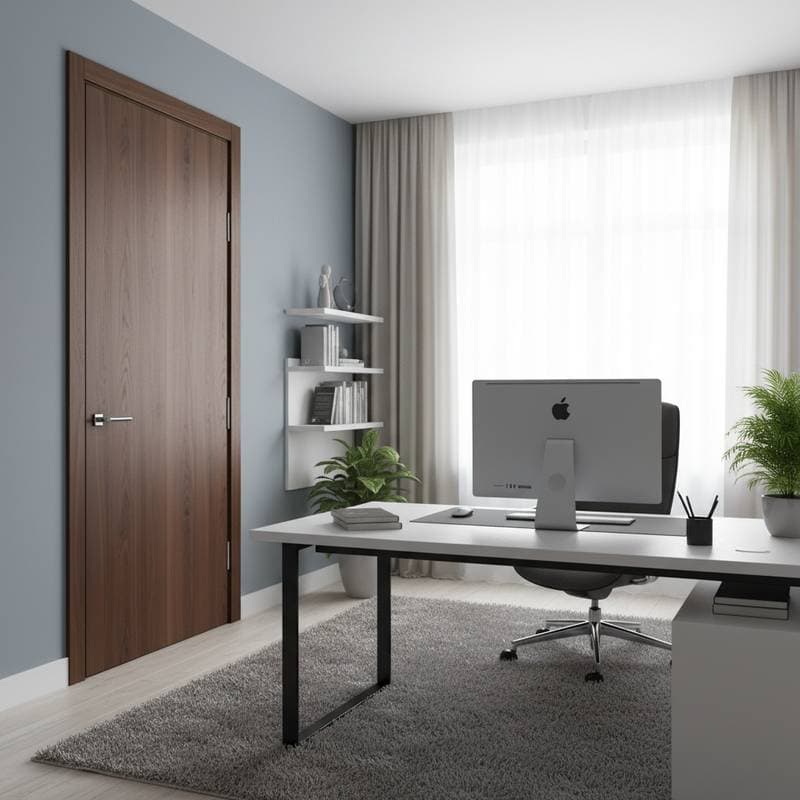Enhancing Urban Comfort: Acoustic Windows Attenuate 85 Percent of Noise
City environments offer vibrant energy and accessibility, yet they often introduce persistent noise from vehicles, construction, and dense populations. This auditory intrusion disrupts daily life in apartments and houses. Acoustic windows provide an effective remedy, diminishing external sounds by as much as 85 percent and elevating the quality of indoor spaces for city inhabitants.
Core Principles of Acoustic Windows
Acoustic windows employ sophisticated engineering to minimize sound penetration, utilizing material innovations and precise construction. They resemble conventional windows externally but feature multilayered glass assemblies, damping interlayers, and robust seals. These elements collectively disrupt sound waves, preventing their propagation into living areas.
Effectiveness hinges on variables such as pane thickness, interlayer spacing, inert gas fillings, and seal integrity. While total silence remains unattainable, these systems substantially mute urban clamor, facilitating clearer communication, focused productivity, and restorative sleep.
Available Designs and Materials
Selections in acoustic windows vary to accommodate differing noise intensities, building aesthetics, and financial constraints.
-
Double-Glazed Configurations
Two glass layers separated by an insulating void filled with air or argon create a primary sound barrier. This setup suits widespread applications in homes and offices, striking an equilibrium between affordability and efficacy. -
Laminated Glass Variants
An acoustic interlayer bonds glass sheets, absorbing vibrational energy. Beyond noise control, this enhances shatter resistance and blocks ultraviolet rays, adding layers of protection. -
Triple-Glazed Assemblies
In high-decibel zones, three panes with dual sealed chambers deliver superior attenuation. Heavier construction demands reinforced framing and expert fitting to maintain structural stability. -
Secondary Glazing Solutions
This non-invasive approach adds an inner pane to extant windows, ideal for historic structures or leased properties where full replacement proves impractical.
Prospective buyers must evaluate trade-offs in expense, durability, and upkeep to select configurations aligned with their circumstances.
Mechanisms of Sound Reduction
Auditory energy travels as oscillating pressure waves through the atmosphere. Upon encountering a window, portions reflect, transmit, or dissipate. Acoustic designs incorporate stratified components that fragment and absorb these waves, curtailing their indoor transmission.
Diverse material properties prove essential: dense elements reflect waves, elastic ones absorb them. Optimal pane separation mitigates harmonic amplification, ensuring comprehensive frequency suppression across the audible spectrum.
Performance Comparison
| Type | Initial Cost | Expected Lifespan | Maintenance Needs | Ideal Applications |
|---|---|---|---|---|
| Double Glazed | Moderate | 20+ Years | Periodic Seal Inspections | Standard Urban Settings |
| Laminated | Moderate to Elevated | 20+ Years | Routine Cleaning and Checks | Environments Requiring Security |
| Triple Glazed | Elevated | 25+ Years | Expert Servicing | Intense Noise Exposure Areas |
| Secondary Glazing | Low to Moderate | 10-15 Years | Dual-Surface Cleaning | Preservation or Temporary Upgrades |
Advantages in City Settings
Primary gains include serene interiors that foster better rest, mental focus, and overall health. The insulating properties that block sound also regulate thermal fluctuations, lowering utility expenses for climate control.
Bidirectional sound isolation enhances confidentiality, benefiting remote workspaces, creative studios, or media rooms. Residents gain a profound sense of seclusion amid metropolitan bustle, promoting psychological well-being.
Potential Drawbacks
These windows excel yet fall short of perfection against bass frequencies from sources like freight vehicles or rail systems, which may manifest as subtle tremors. Subpar installation compromises outcomes, as imperfect seals permit sound leakage despite premium materials.
Upfront costs exceed those of basic windows, though accessibility improves with market advancements. Decision-makers should balance initial outlay against enduring gains in tranquility and efficiency.
Step-by-Step Installation Guide
Expert fitting guarantees rated performance levels.
-
Site Assessment and Design
Technicians conduct auditory surveys to pinpoint ingress points and recommend suitable profiles. Accurate dimensions ensure seamless integration and maximal sealing. -
Site Preparation
Existing units receive removal, followed by thorough cleaning and structural evaluation of openings. Reusable frames undergo reinforcement and resealing. -
Unit Placement and Securing
New assemblies fit into position with vapor-tight gaskets and thermal barriers. All connections undergo scrutiny to eliminate vulnerabilities. -
Verification Procedures
Technicians inspect for drafts and confirm operational fluidity in mechanisms. Acoustic metering often quantifies pre- and post-installation differences. -
Finalization and Support
Owners obtain protocols for care, encompassing safe cleaning techniques and routine evaluations to sustain efficacy.
Upkeep for Sustained Performance
Routine care involves gentle glass wiping and seal monitoring. Visible moisture between layers or rising noise signals the need for gasket renewal.
Frame integrity demands attention in variable climates to avert degradation. Consistent hygiene averts residue accumulation that could impair barriers.
Tailoring to Individual Circumstances
Optimal choices reflect local acoustics and lifestyle demands. Proximity to thoroughfares or aviation hubs warrants advanced lamination or triple layers. Moderate urban sound may suffice with double glazing. Temporary residents favor secondary options for adaptability.
Financial planning influences selections; incremental enhancements yield tangible improvements. Beyond decibel ratings, factor in thermal ratings, visual compatibility, and service demands.
Enduring Value and Future Outlook
Such installations represent strategic enhancements to livability and resale appeal. Insulation benefits curtail operational costs, while serene atmospheres boost occupant contentment. In expanding metropolises, noise mitigation elevates property desirability.
Emerging integrations like adaptive glazing promise dynamic responses to environmental shifts. Early adoption aligns residences with advancing standards of acoustic harmony.
Pre-Installation Planning Essentials
Solicit bids from accredited professionals, demanding verified specifications and guarantees. Verify compliance with standardized attenuation metrics. Warranties should cover materials and labor comprehensively.
Consider airflow and illumination impacts; selections in framing and coatings preserve luminosity while managing solar gain.
Optimizing Post-Installation Outcomes
Observe diurnal variations in acoustics to identify residual issues. Supplementary treatments like sound-absorbent drapery or paneling augment window effects. The objective remains holistic serenity supporting diverse activities.
In dense urban landscapes, acoustic windows restore equilibrium, enabling dwellers to thrive amid the symphony of city life.






